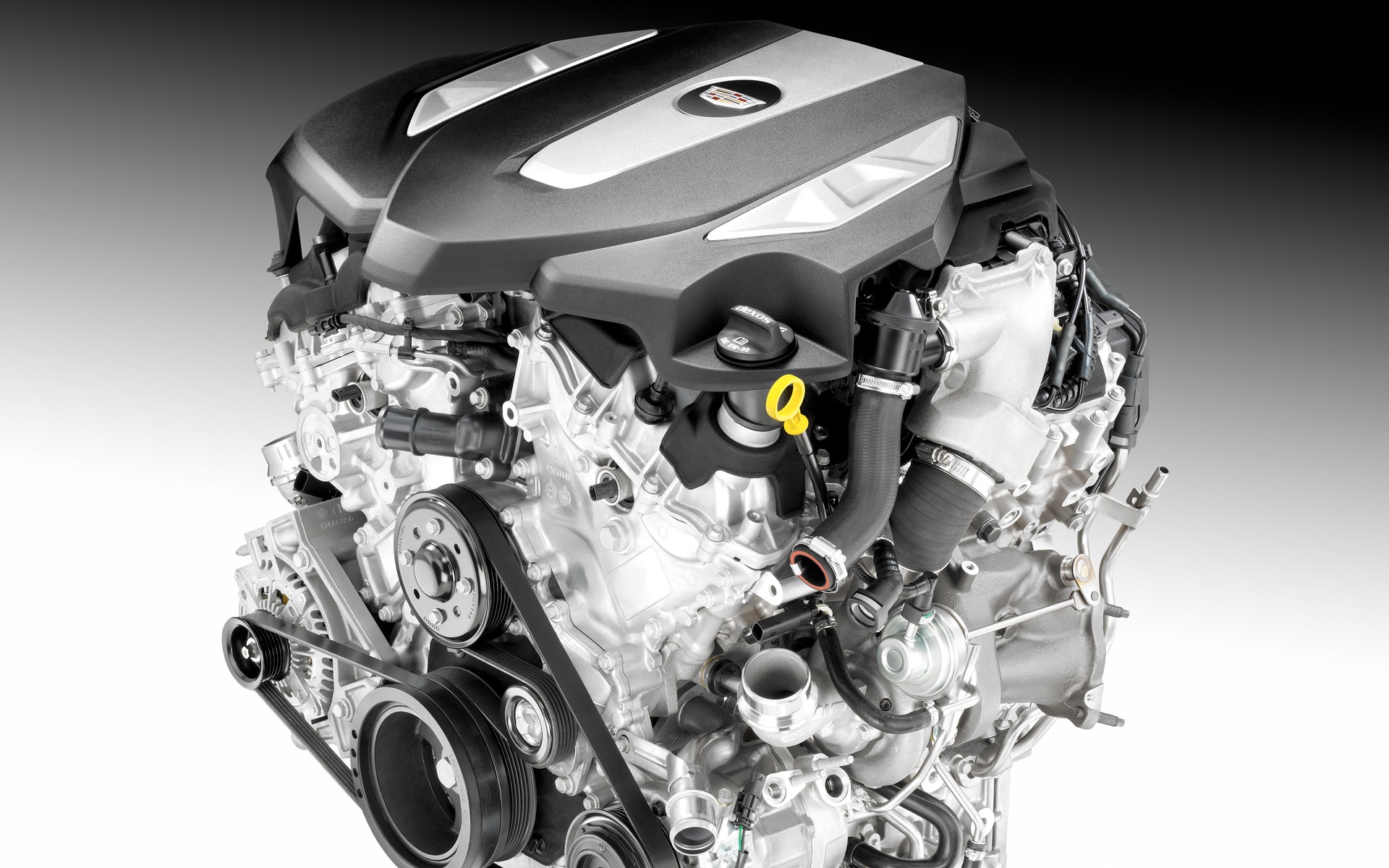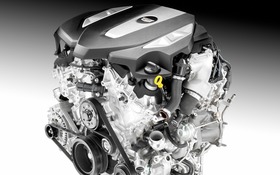2016 Cadillac V6 Engines: The Best Of The Best?
For decades, we automatically associated the Cadillac name with massive V8 engines. But during an overhaul in the late 90s, most models were pared down to a more reasonable size and equipped with V6s. These engines delivered satisfying performances and reasonable fuel economy for the category, but Cadillac is not one to rest on its laurels, and they’re now offering a new generation of V6s. These newbies will first appear in the brand-new CT6, followed by the ATS, CTS and other new models released over the next few months.
The new V6s are part of a wider investment scheme ($20 billion by 2020) that will include the development of four- and six-cylinder diesel engines, an electric drivetrain and, of course, a V8 for select vehicles. This division also plans to break into new vehicle categories. The first units from the program include a 3.6-litre naturally aspirated mill and a 3.0-litre twin-turbo V6. Cadillac engineers also designed an eight-speed transmission to enhance their future drivetrains.
Much more ambitious than in the past, Cadillac now wants to produce the very best naturally aspirated V6 and turbocharged engines. When asked about their objectives, these American engineers even said they were out to beat the top German products.
Back to square one
Don’t make the mistake of believing that this is the same 3.6-litre engine as before, just because its displacement is the same. They built this unit from scratch, except for a handful of parts, which the engineer had in his pocket during the presentation. The aluminum engine block’s structure was carefully designed to be lighter and stiffer. The cylinder heads ensure optimal air flow in the cylinders, while the more rigid crankshaft improves performance and reduces vibrations. A new cooling system and a two-stage oil pump improve efficiency. These changes have also quieted the engine at lower revs; in fact, Cadillac claims that this is the quietest V6 in the category. To help achieve this, they used rubber-cushioned chain sprockets for improved soundproofing and durability. The end result is a mill that delivers 335 horsepower, which is 14 more than the engine it is replacing.
Smoothness and increased power were two key considerations in developing this engine, but meeting the latest government regulations for fuel efficiency was also very important. With that in mind, the engineers included direct fuel injection, as this helps cut consumption while boosting power. Taking it a step further, this V6 also features Active Fuel Management (cylinder deactivation), which allows it to operate on four cylinders instead of six when the engine isn’t taxed. And, for the first time at Cadillac, a stop-start function has been added. According to Ameer Haider, the chief engineer overseeing the development of this naturally aspirated V6, these technologies combine for a 9% reduction in fuel consumption.
I’ll spare you the lengthy details on the various refinements, changes and innovations added throughout the engine. But let me assure you that all the same upgrades apply to the 3.0-litre turbo, too.
First in the world
Even through the 3.6-litre and 3.0-litre V6s have most of the same mechanical components, the bigger of the two doesn’t have the twin turbos. Keep in mind that the two engines feature the same stroke length of 85.8 mm, but the 3.0-litre engine’s bore is 10% smaller at 86 mm. Because of this, it can accommodate lighter pistons for improved rev capability and significant reductions in turbo lag. In fact, to slash lag to a minimum, the turbines are made of titanium-aluminide, which reduces weight and allows the turbine to engage more quickly.
The engineers also designed an air cooling system that is covered under various patents. Essentially, it permits prompter cooling of air flowing through a shorter distance. It also limits the volume of air lost from the cylinders. The result of these innovative developments and upgrades is an output of 400 horsepower and 400 lb.-ft. of torque. This outpaces BMW’s six-cylinder twin-turbo engine, which produces 80 horsepower less, and Audi’s turbocharged V6, which offers 333 horsepower. And yet, these two rival engines have the same amount of displacement as Cadillac’s 3.0-litre turbo.
But you know what Cadillac is really proud of? The fact that this twin-turbo engine is the only one of its kind in the world, as no others like it come with cylinder deactivation. Like on the 3.6-litre V6, two cylinders are deactivated to save gas in some conditions. To support this, the engineers developed an ingenious valve locking system that enhances performance, even with two fewer cylinders.
Compared to the previous generation twin-turbo, the new V6 has less displacement and offers a little less power. However, it makes up for this by offering 25 lb.-ft. more torque and faster responding turbochargers. Overall, the engine delivers better performances while using less gas.
Setting the benchmark
This time, Cadillac didn’t want to keep pace with everyone else; they wanted to do better. Enter the Hydra-Matic eight speed automatic transmission that optimizes performance and makes better use of available power.
As has been the case for several years already, the Cadillac division is no longer running behind the competition. It’s on par with its rivals, except where it edges ahead of them. But before Cadillac pops open the champagne, they’ll have to deliver on all their promises when we test the models equipped with these new engines.











